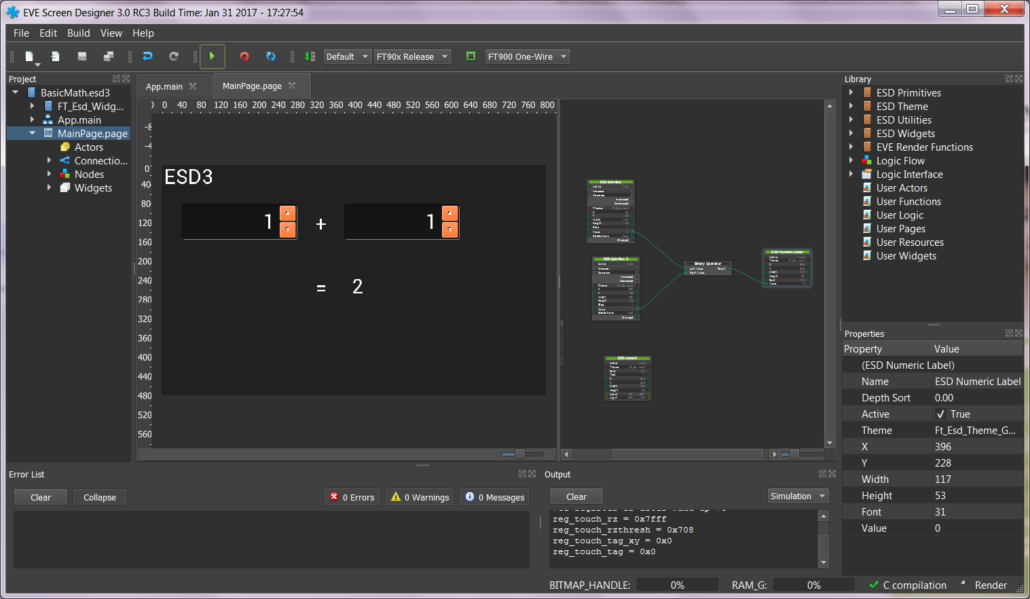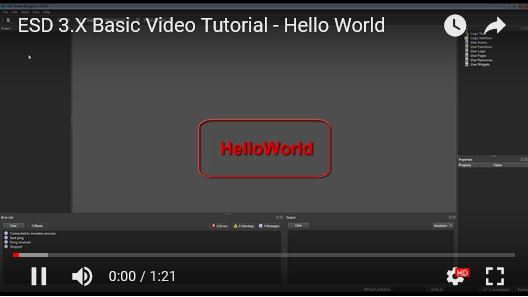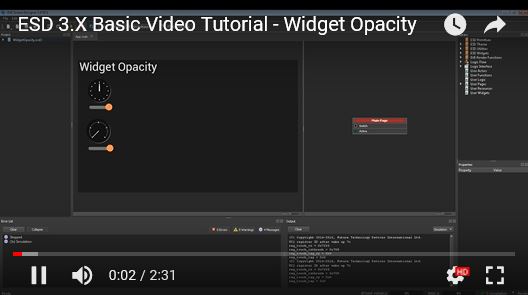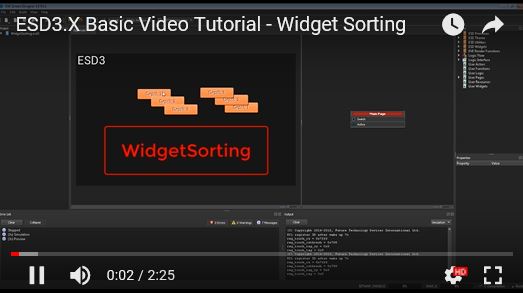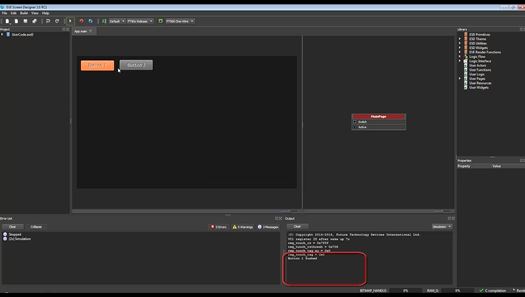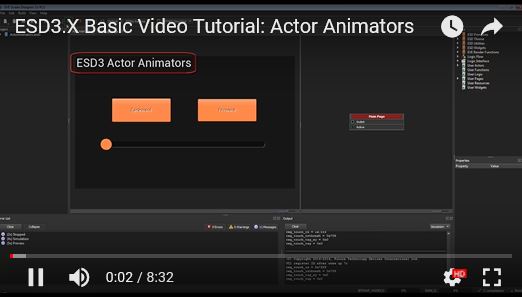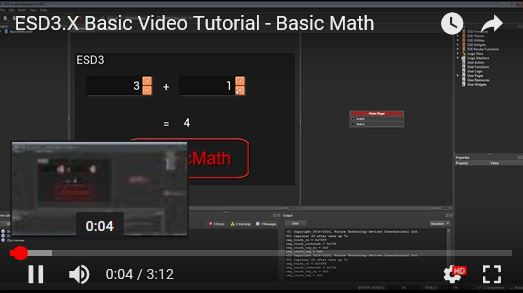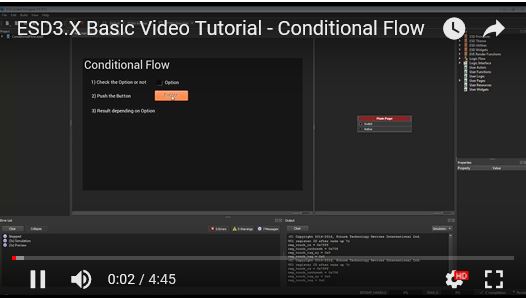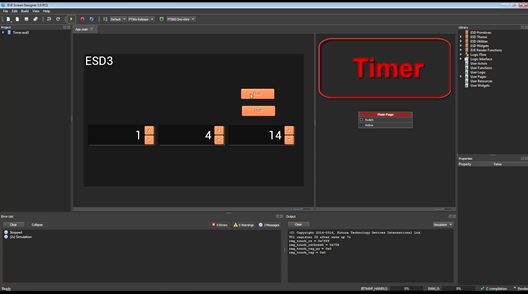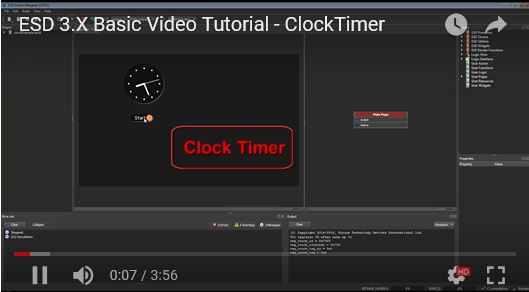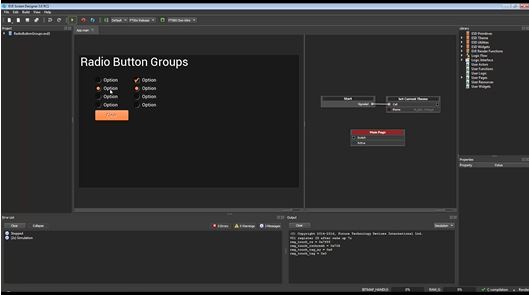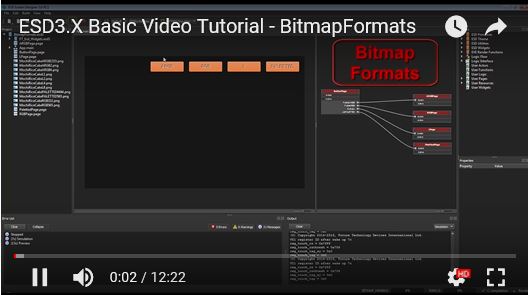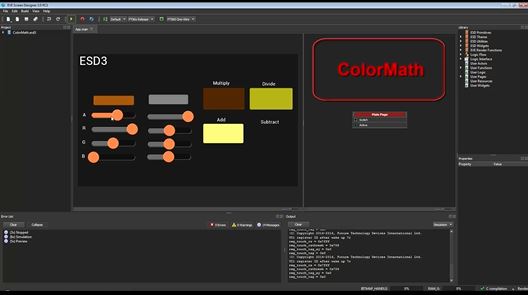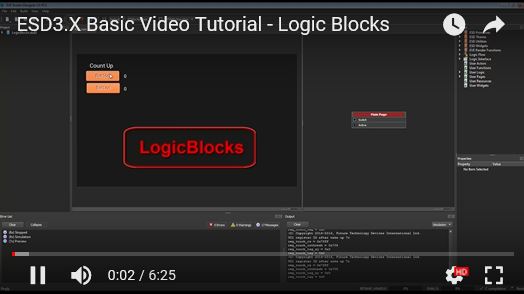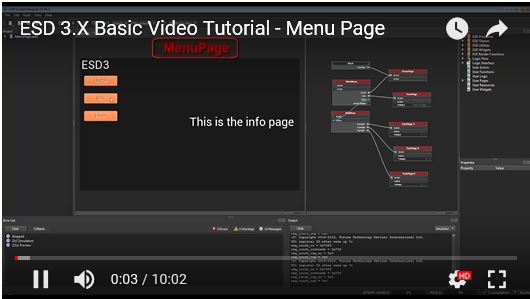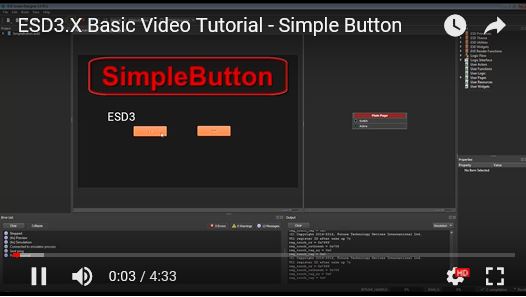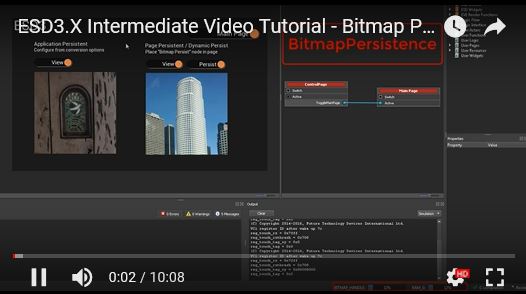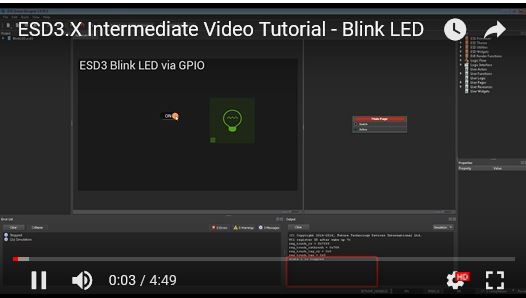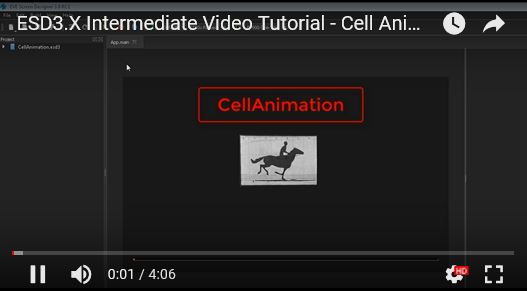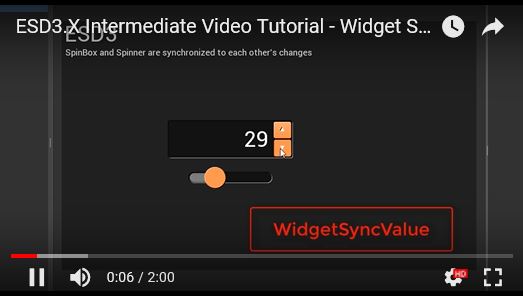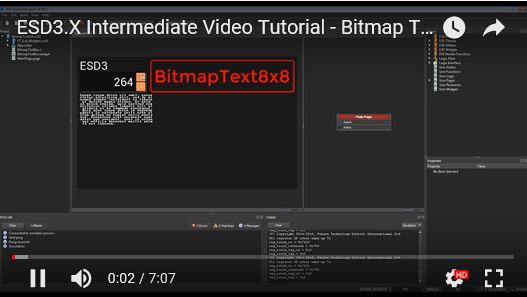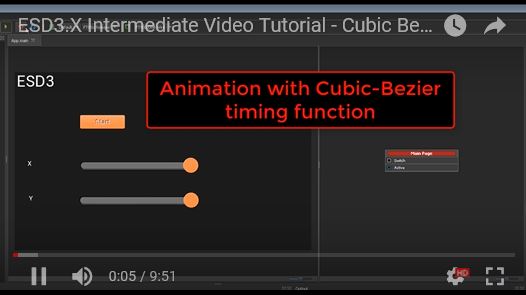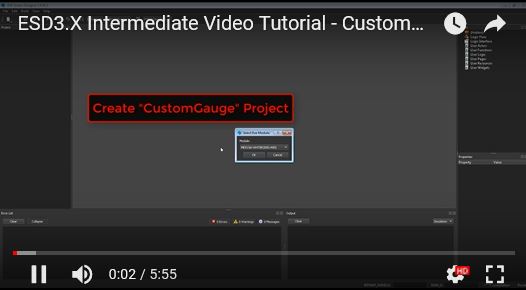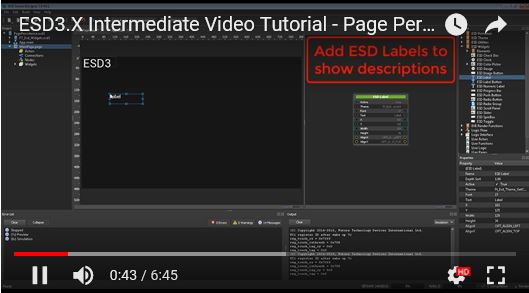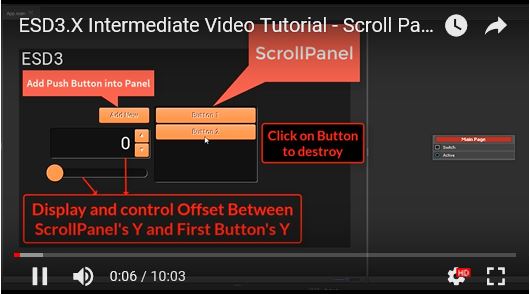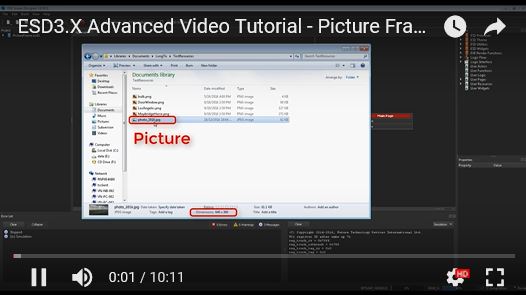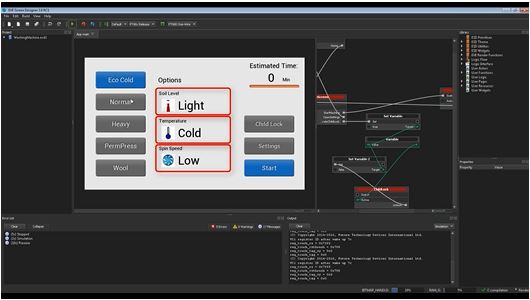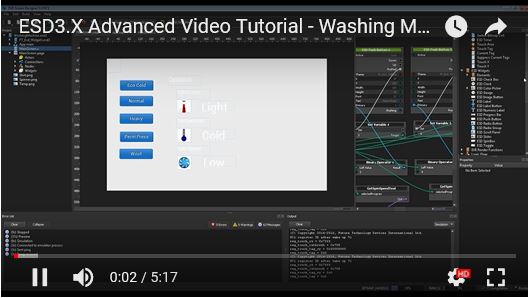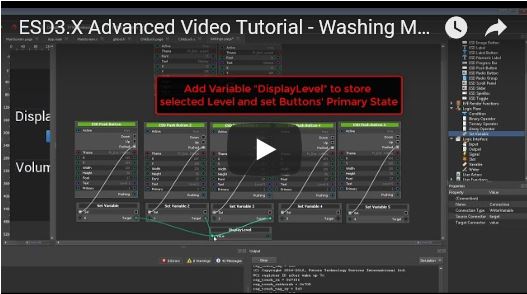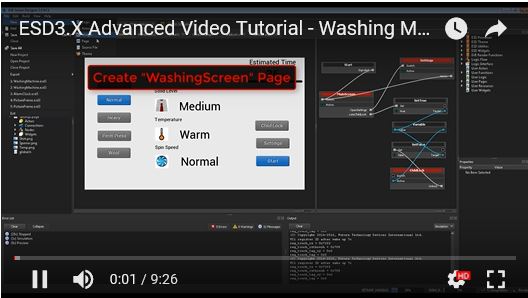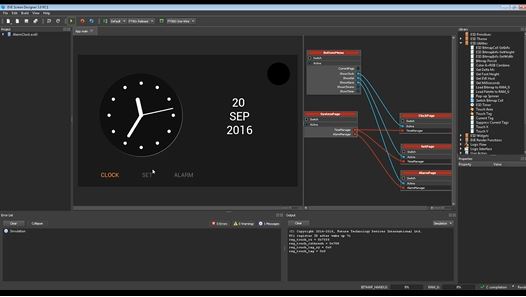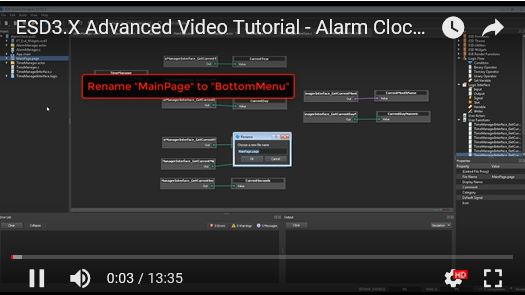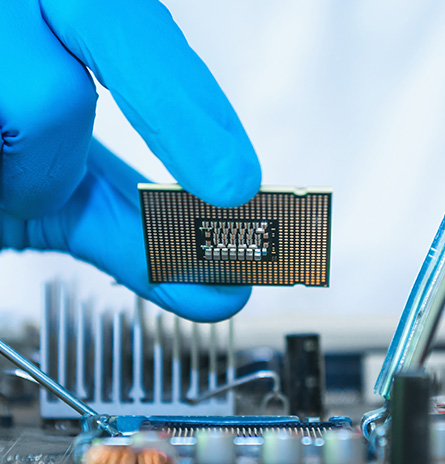<OBSELETE>
EVE Screen Designer (ESD) 3.x
The EVE Screen Designer 3.X integrated development environment (IDE) further facilitates EVE-based human machine interface (HMI) construction. It presents a simple, highly intuitive package through which a wide range of exciting visual effects can be created and various items of graphical content edited, in order that enhanced user experiences are derived.
Building on the previous generation, it has advanced code generation capabilities (with exported C-based source code being applicable to any hardware associated with Bridgetek’s FT90x MCUs), plus a greater scope of widgets that can be incorporated. As users rely predominantly on visual programming (though there is provision to use text for editing purposes), they do not need to have an in-depth understanding of EVE display lists.
*Please note that the current version of the ESD3.x supports the FT81x series only.
Key features of the ESD 3.x include:
- WYSIWYG IDE
- Logic node based Visual Programming method for screen logic creation
- ANSI C Code generation for completed project
- Ability to live preview the designed project
- Higher level widget and widget communications
- Interactive widgets
- Extensive widget library
- Tool chain integration
- Comprehensive example projects
Please click here for the platform porting guide for ESD exported projects.
ESD 3.x Video Tutorials
A range of video tutorials demonstrating applications made possible utilising the EVE Screen Designer (ESD) 3.X integrated development environment (IDE) are available below. The tutorials are categorised into three separate groups based on their simplicity of use – Basic, Intermediate and Advanced.
Basic Video Tutorials
Tutorial : Hello World
A single page with clickable “ESD Label Button” and “ESD Label” widgets to show a “Hello World” string.
Tutorial : Widget Opacity
A single page with “ESD Clock” and “ESD Slider” to show the communications between widgets.
Tutorial : Widget Sorting
A single page with “ESD Push Button” widget to show the usage of the “Depth Sort” property of the widget.
Tutorial : User Code
A single page with a “ESD Push Button” widget to show how to add user function when button is clicked
Tutorial : Actor Animators
A single page with two Actor notes to control the progress bar in animated behaviour.
Tutorial : Basic Math
A single page with two “ESD Spin Box” widgets and “ESD Label” Button to calculate and addition result.
Tutorial : Conditional Flow
A single page tutorial with “ESD Push Button”;“ESD Check Box” and “ESD Label” functions to demonstrate how to control the control flow conditionally.
Tutorial : Timer
A single page with “ESD SpinBox” and “ESD Push Button” widgets and “ESD Timer” actor to update the value of the spin box when the timer ticks.
Tutorial : Clock Timer
A single page with “ESD Toggle” and “ESD Clock” widgets and “ESD Timer” actor to display a running clock with a Start/Stop switch.
Tutorial : Radio Button Groups
A single page with “ESD Radio Button”;“ESD Radio Button Group” and “ESD Push Button” to demonstrate radio button usage.
Tutorial : Bitmap Formats
Four pages with four “ESD Bitmap” and “ESD Push Button” widgets to show all the EVE format bitmaps.
Tutorial : Color Math
A single page with “ESD Slider” and “ESD Rectangle” functions to display the color based on user input and formulas.
Tutorial : Logic Blocks
A single page with “ESD Push Button” and “ESD Numeric Label”functions to show the logic which increasing value when .the user clicks the button.
Tutorial : Menu Page
Four pages with “ESD Push Button” and “ESD Label” to simulate a menu bar implementation.
Tutorial : Simple Button
A single page with “ESD Push Button” and “ESD Label” to use the ESD “Update” built-in slot
Intermediate Video Tutorials
Tutorial : Bitmap Persistence
A two pages application which shows the persistence concept in application and page level, by using the bitmap widget as an example.
Tutorial : Blink LED
A single page application shows how to control the LED on a hardware platform using user defined code.
Tutorial : Cell Animation
A single page application shows how to implement animations effect by switching bitmap cells.
Tutorial : Widget Sync Value
A two page application shows a scroll panel which manages the dynamic created pages by calling user code..
Tutorial : Bitmap Text
A single page application which shows bitmap-based text in EVE format “TEXT8X8” by creating a new “BitmapTextBox” widget..
Tutorial : Cubic Bezier
A single page application demonstrates a “Cubic Bezier” type animation effect by creating new actors.
Tutorial : Custom Gauge
A single page application shows a customized gauge with rotation of the one needle and background pictures.
Tutorial : Page Persistence
A two page application shows the persistence concept by switching on and off the page, based on user input.
Tutorial : Scroll Panel
A single page application shows a scroll panel which manages the dynamic created push button by calling user code.
Tutorial : Scroll Panel Page
A two page application shows a scroll panel which manages the dynamic created pages by calling user code.
Advanced Video Tutorials
Tutorial : Thermostat
An application shows how to call a user defined function periodically by built-in slot “Update”.
Tutorial : Washing Machine (Part 1)
An application showing a simple HMI design in an example of washing machine UI. It contains several
pictures and multiple user source codes..
Tutorial : Washing Machine (Part 2)
An application showing a simple HMI design in an example of washing machine UI. It contains several pictures and multiple user source codes.
Tutorial : Washing Machine (Part 3)
An application showing a simple HMI design in an example of washing machine UI. It contains several pictures and multiple user source codes..
Tutorial : Washing Machine (Part 4)
An application showing a simple HMI design in an example of washing machine UI. It contains several pictures and multiple user source codes.
Tutorial : Alarm Clock (Part 1)
An application which contains a running clock with time adjust functionality and alarm mode. It contains several user added source files and user defined logic node, as well as a customized actor.
Tutorial : Alarm Clock (Part 2)
An application which contains a running clock with time adjust functionality and alarm mode. It contains several user added source files and user defined logic node, as well as a customized actor.


